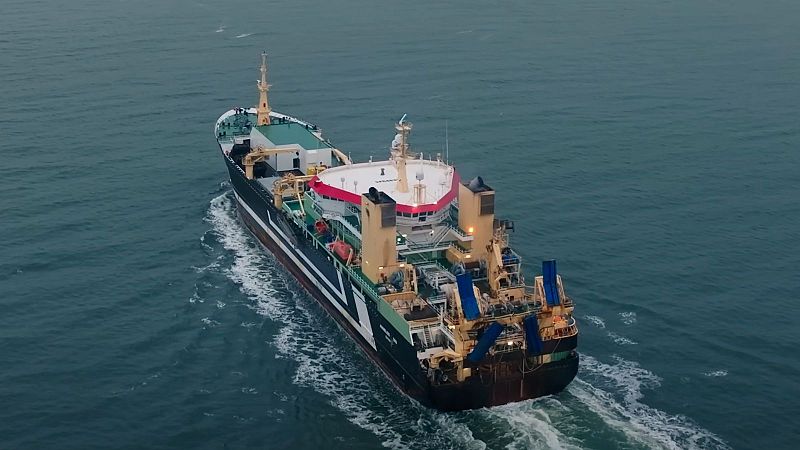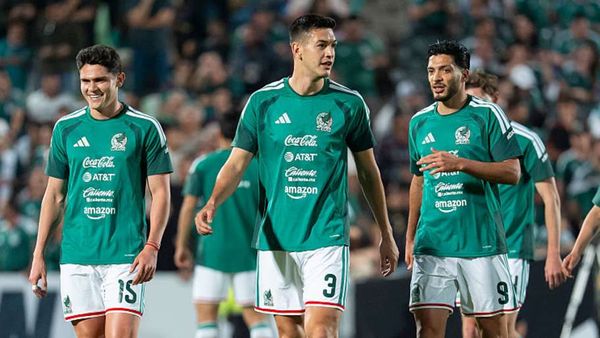
Five Dutch companies form “an extremely powerful oligopoly” that dominates European fishing, according to a new investigation into their use of marine resources and public funds.
Nicknamed the “Big Five” - Parlevliet & Van der Plas (P&P), Cornelis Vrolijk, Van der Zwan, Alda Seafood and the De Boer family - generated €2.4 billion in revenue in 2023, according to the report from France-based NGO BLOOM.
For the first time, the “sprawling and opaque empire” of these fishing supermajors has been mapped. It claims that they have all been involved in major scandals - from illegal fishing in Peru to corruption in Namibia.
"Thanks to a network of opaque subsidiaries, a fleet of technologically over-equipped vessels, and an aggressive takeover strategy, these multinationals reign over global fishing,” says Laetitia Bisiaux, head of the industrial fishing campaign at BLOOM.
“Behind a façade of competition, these companies cooperate closely: they join forces to crush the other players in the sector.”
How do the Big Five dominate European and global fishing?
Through their network of 400 subsidiaries, BLOOM’s report says the Big Five control nearly 230 vessels - including the world's largest fishing vessel, the 145-metre-long Annelies Ilena.
It estimates their combined capacity at 260,000 tonnes, a sixth of the entire EU fishing fleet’s gross tonnage. If you lined them all up, they would span 10 kilometres - a two-hour walking distance.
The investigation, conducted with the Dutch consortium of investigative journalists Spit, reveals that most of the companies are vertically integrated. This means they control the entire production chain - from catch to plate, trawler to fish-and-chip shop - on a global scale.
This enables them, it alleges, to buy fish from their own subsidiaries at artificially low prices to reduce the wages paid to crews (who are often paid a share of the catch) and to transfer profits to tax havens.
And, BLOOM says, their outsized presence is giving them undue lobbying sway. Through international subsidiaries, the Big Five are members of at least fifteen lobbying organisations in the EU.
The report adds that this “poses serious problems to the smooth running of democracies through their influence over public decision-making.”
Where do the Big Five fishing companies operate?
First, a quick explainer. The EU sets fishing catch limits, which are then shared among countries through national fishing quotas.
Fishing companies purchase these rights in the form of individual transferable fishing quotas (ITQs); they are their most significant assets, and can be sold among each other, used as collateral for loans, leased out to smaller companies, and used to speculate on the market.
The Dutch, BLOOM says, were quick to understand and exploit these dynamics in the 1980s, buying up fishing rights and fleets in other countries when prices were low. Being first on the scene with large freezer-trawlers also enabled them to capitalise on the fact that fishing rights are often distributed on the basis of historical catches, creating a feedback loop of fish and wealth.

The new report details how the Big Five work together in order to pool or exchange fishing quotas so they can operate more efficiently. They also jointly own subsidiaries and have shared ownership in some ships.
After the Netherlands, these companies have invested the most capital in France. 24 industrial vessels holding a large proportion of French quotas operate under the French flag via their subsidiaries.
The UK ranks third in terms of vessels owned by the Big Five (18), enabling them to maintain control of fishing areas and quotas despite Brexit. In terms of tonnage, Germany ranks second despite having only seven vessels, given their large size.
A second BLOOM investigation, also released today, delves into the public subsidies granted to Dutch shipowners in the aftermath of Brexit. It finds that the Big Five received €53.2 million of the €135 million package intended to compensate struggling fishers for a loss of access to British waters.
Furthermore, the main beneficiaries of these subsidiaries were trawlers equipped with electrodes for destructive electric fishing, and some trawlers which haven’t actually been blocked by Brexit.
How the Big 5 engage in destructive fishing practices
The Annelies Ilena, co-owned by P&P and Alda Seafood while flying a Polish flag, catches 400 tonnes of fish a day, as much as 1,000 small-scale fishing boats bring in.
It might be the biggest factory ship, but for BLOOM experts, it is emblematic of the wholesale industrialisation of the fishing sector.
All but one of the Big Five’s 230-strong fleet engages in the most destructive types of fishing: pelagic trawling, bottom trawling and demersal seining (pulling a net across the sea floor). These techniques are deployed in the English Channel, North Sea, West Africa, Indian Ocean, Pacific, and the Arctic.
According to BLOOM, “their industrial logic is based on gigantic vessels and massive extraction capacity, which is incompatible with the preservation of healthy marine ecosystems.”
The report also claims the profit from this “extractivist approach to wild resources” is now being transferred into real estate, including high-rise residential buildings.
Fisheries economists fear that this could be a warning signal that, as a result of overfishing, the return on investments in the fishing industry is declining.
Parlevliet & Van der Plas, Cornelis Vrolijk, Van der Zwan, Alda Seafood and the De Boer family have been contacted for comment.







